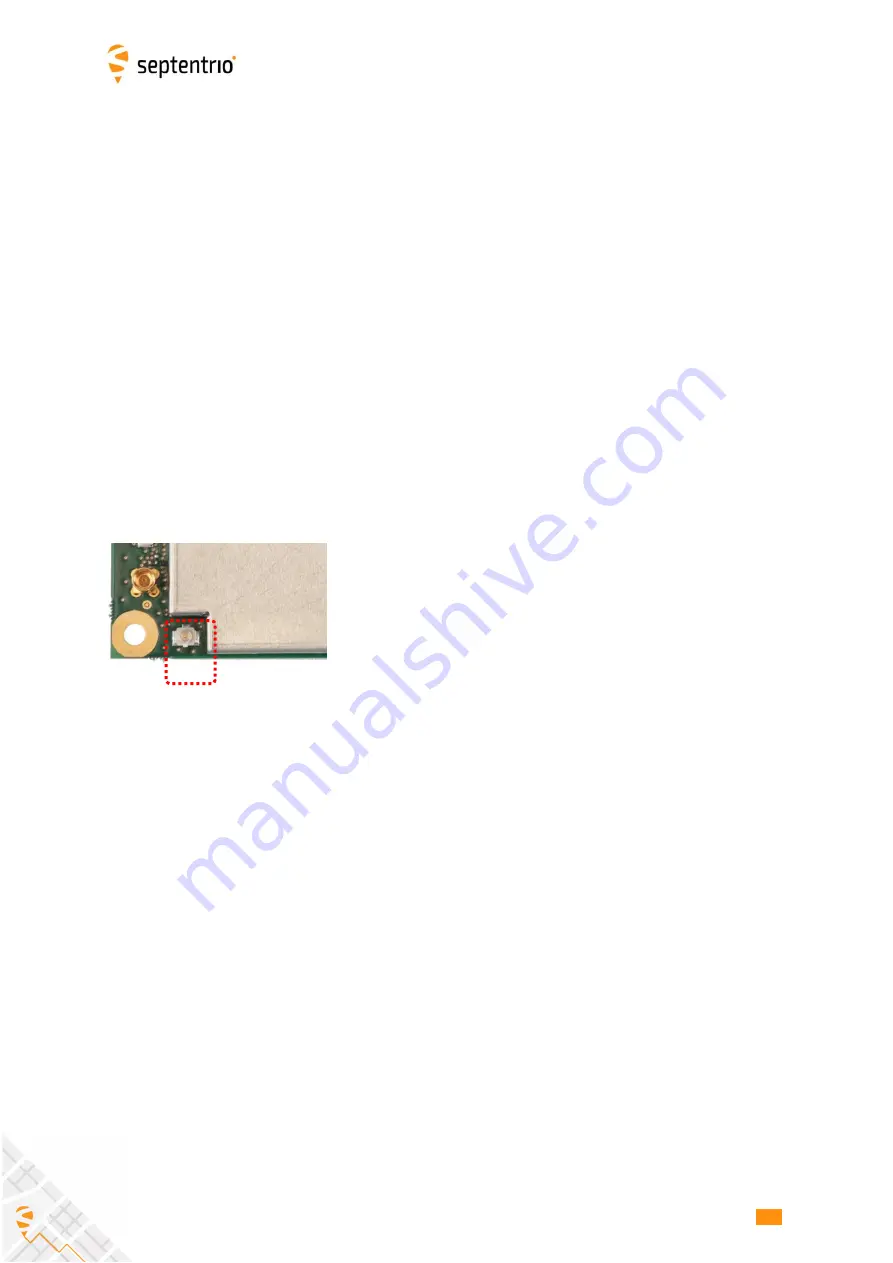
14
14
AsteRx-m3 OEM
14
2.6
External Frequency Reference Input (REF IN)
An external 10 MHz frequency reference can be fed into the receiver through pin#60 of
the 60-pin connector (REF IN). The 10 MHz signal can be a sine wave or a square wave
with a peak-to-peak amplitude between 2V and 5V, for example it can be an LVTTL clock
signal.
At start-up, the receiver checks the presence of the external frequency reference on
pin#60. If a signal is present, the receiver uses that signal as primary frequency reference,
instead of its internal TCXO. The reference signal must be present on pin#60 at receiver
boot and must remain present at all times during receiver operation.
This feature is under permission. Make sure that the FreqSync permission is enabled if
you need to use the REF IN pin. If the receiver detects a 10 MHz signal on its REF IN pin
and the FreqSync permission is disabled, most output will be blocked.
2.7
Frequency Reference Output (REF OUT)
The frequency reference used by the receiver is available at the REFOUT u.FL connector.
This is a 10MHz square wave, 0 - 2.8V, output impedance 50Ohms.
The REFOUT signal can be enabled or disabled with the
setREFOUTMode
command. It is
enabled by default.
When an external frequency reference is provided to the REF IN pin (see section 2.6), the
signal at the REF OUT connector is synchronized with the REF IN signal.
2.8
Event/TimeSync Inputs
The receiver features two event inputs (EventA on the 30-pin connector, and EventB on
the 60-pin connector), which can be used to time tag external events with a time resolution
of 20ns. Use the
setEventParameters
command to configure these pins (e.g. to set the
polarity). Note that this feature requires the TimedEvent permission to be enabled in the
receiver.
If the TimeSync permission is enabled, the event inputs can also be configured as
TimeSync source using the
setTimeSyncSource
command. When an event pin is
configured as TimeSync source, the receiver expects to see a one-pulse-per-second (PPS)
signal on that pin. It will then synchronize its internal time base (i.e. the time at which
REF OUT
Содержание AsteRx-m3
Страница 1: ...AsteRx m3 Product Group Hardware Manual Version 2 2 0 ...
Страница 18: ...18 18 AsteRx m3 OEM 18 ...















































